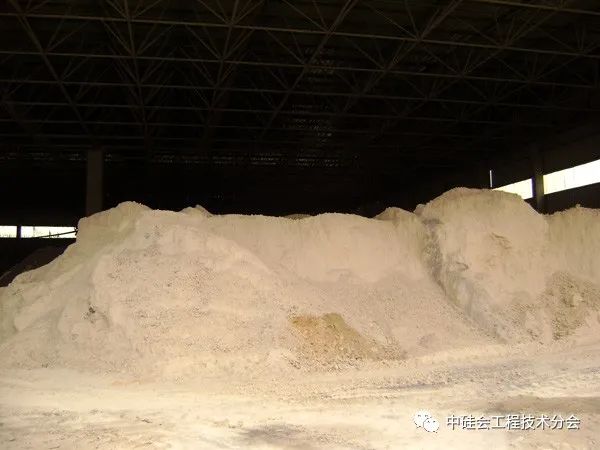How high is the chloride ion in desulfurized gypsum used in cement production?
Introduction to Chlorine Ash Disposal Technology 8.
There are many wastes with high chlorine content in them.
Although the current coal price has fallen, it is still high.
Biomass, waste textile, rubber, construction waste, oil sludge Technical Proposal for Preparation and Application of Alternative Raw Materials and Fuels for Domestic Waste and Other Wastes 6.
Highlights of the 5th Cement Kiln Collaborative Waste Disposal Technology Exchange Conference 1.
Unlike cement companies, there are product chloride ion restrictions that need to be considered.
Recently, several cement companies have reported that the chloride ion content of desulfurization gypsum used in their cement production process has increased.
Production raw materials such as front-end limestone may bring in a certain amount of chlorine, and new chloride ions may also be brought in from back-end grinding aids and mixtures.
Analysis of problems faced by cement kiln collaborative waste disposal and technological development trend 3.
The alternative fuels used in power plants include treated domestic waste, waste textile, waste rubber, waste plastics, biomass fuels, etc.
The chloride ion content in the flue gas of power plants using chlorine containing alternative fuels is bound to increase, and eventually a portion of it enters the desulfurization gypsum during the flue gas desulfurization process.
Carbon asset management and green factory certification for collaborative disposal enterprises, interpretation of green product certification 13.
Some enterprises have measured that the chloride ion content of desulfurization gypsum has reached about 0.4%.
Sharing of experience in operation and management of cement kiln collaborative waste disposal 5.

At the same time, the composition of fly ash in power plants using chlorine containing alternative fuels will inevitably change accordingly.
Introduction to New Products of Nitrogen Field Preparation and Protection System 10.
Cement companies that collaborate on the disposal of wastes and use alternative fuels are even more distressed, which poses further constraints on the amount of chlorine containing waste that can be disposed of in a collaborative manner.
Registration for various types of new technologies and new products for collaborative disposal of waste in cement kilns: Zhang Liying 13641192109.
.

Introduction to inspection and detection instruments used for collaborative disposal of waste 14.
Introduction to Digital Operation Management Platform for Collaborative Disposal of Wastes in Cement Kilns 9.
Interpretation of laws and regulations for cement kiln collaborative waste disposal and case analysis 4.
Case Study of Corrosion and Anti scaling Microcrystalline Materials in Collaborative Disposal 11 Introduction to accurate dechlorination systems that address harmful elements entering the kiln, increase disposal capacity, and reduce interference from kiln conditions 12.
Collaborative Disposal Technology and Key Points Analysis for Polluted Soil 7.
How is the chloride ion content of desulfurization gypsum high? The editor speculates that the main reason is that power plants are also starting to use alternative fuels.
As long as the price of alternative fuels is much lower than that of coal with the same calorific value, they will actively adopt them.
Interpretation of standards and policies for cement kiln collaborative waste disposal and trend prediction analysis 2.
Even if considered as a third grade product, the chloride ion content of 0.4% still exceeds the standard by nearly 7 times.
For reference, the content of fly ash from waste incineration power plants, especially chlorine ions, dioxins, and heavy metals, requires close attention from cement companies.
According to the requirements of “Flue Gas Desulfurization Gypsum” (GB/T37785-2019), the chloride ion content of desulfurization gypsum at the first level should be lower than 0.01%, at the second level should be lower than 0.03%, and at the third level should be lower than 0.06%.
In the future, the application of fly ash and desulfurized gypsum with high chlorine content will be faced by more cement enterprises.
Without affecting production, power production enterprises only consider the cost performance ratio of alternative fuels and coal.
Based on the chloride ion content of desulfurization gypsum of 0.4% and the addition amount of 3% during cement grinding, the use of desulfurization gypsum alone can make the chloride ion content in cement products reach 0.012%.
The chloride ion limit for cement in GB175-2007 General Purpose Portland Cement is 0.06%.
Electric power production enterprises have a certain amount of coal carbon per year, and have a strong desire to use alternative fuels, thereby reducing production costs and saving coal carbon quotas.
This issue will become more prominent in the developed regions of the Middle East in the future.

